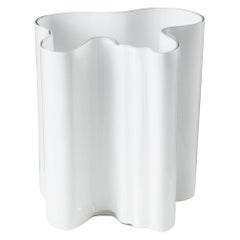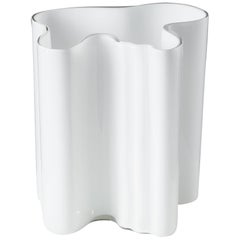Aalto 3031
Magnificent Scale Aalto Savoy Vase by Alvar Aalto for Iittala glassworks
Located in Sagaponack, NY
. Signed by hand? 'Alvar Aalto 3031' made by Iittala Glassworks
Category
20th Century Finnish Vases
Materials
Glass
Recent Sales
Vase, “Model 3031” Designed by Alvar Aalto, Finland, 1950s
By Alvar Aalto
Located in Stockholm, SE
Opal glass that was blown into a wooden mould.
Signed "Alvar Aalto 3031".
Category
Vintage 1950s Finnish Mid-Century Modern Vases
Materials
Opaline Glass
Vase, “model 3031” Designed by Alvar Aalto,
By Alvar Aalto
Located in Stockholm, SE
Finland, 1968.
Opal glass that was blown into a wooden mould.
Signed "Alvar Aalto 3031
Category
Vintage 1960s Finnish Modern Glass
Materials
Opal
Large Vase Model 3031 “Savoy” Designed by Alvar Aalto for Iittala, Finland, 1956
By Alvar Aalto, Iittala
Located in La Teste De Buch, FR
Clear glass vase by Alvar Aalto, model 3031 also known as Savoy vase
Made by Iittala in 1956
Category
Vintage 1950s Finnish Vases
Materials
Blown Glass
H 11.23 in W 12.21 in D 11.23 in
Get Updated with New Arrivals
Save "Aalto 3031", and we’ll notify you when there are new listings in this category.
More Ways To Browse
Alvar Aalto 3031
Olivier Pettit
Onslow Pattern
Orrefors Fish Graal
Orrefors Palmquist
Palais Stoclet
Pantheon Sterling
Paper Mache Horse
Paper Mache Indian
Papier Mache Bust
Pastille Burner
Paul Heijnen
Paul Mccobb 6 Drawer
Paul Soldner Pottery
Peacock Fireplace Screen
Per Lutken Drop
Peranakan Furniture
Peter Lassen


